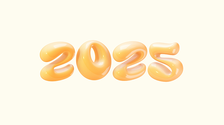When you start to learn a language, especially if you are studying Arabic for beginners, do not just start by studying individual words.
Native Arabic speakers did not learn Arabic by remembering single words; they learned phrases. Learning with phrases is faster than studying individual words. Students who learn phrases also have much better grammar.
But now what should I do?
When you learn a new word, try to put this word in a phrase, or even better, a simple sentence.
Why?
Because, long sentences (infested with grammatical rules) may also be infested with errors, and this will not help you! Now, let us learn how to put words into context using some simple sentence patterns in Arabic:
Subject and Predicate
The Subject المُبْتَدَأ
The subject is what the sentence is talking about. It could be a noun like:
The book الكِتَابُ
Cairo القَاهِرَة
Ahmed أَحْمَد
or a personal pronoun like:
I أَنَـا
he هُوَ
they نَحْنُ
or a demonstrative pronoun like:
This (masculine) هَذَا
This (feminine) هَذِهِ
The Predicate الخبر
The predicate tells us something about the subject. The Arabic word خَبَر means a piece of news, so you can think of the predicate الخبر as delivering news about the subject. It may be an adjective (happy سَعِيدٌ ), verb (eat يَأْكُلُ ), or noun (student طَالِبٌ ) or prepositional phrase (on the desk عَلَى المَكْتَب ).
An adjective is a word that describes a noun. Here are some examples of adjectives: smart ذَكِي pretty جَمِيل good جَيِّد , etc.
The predicate الخبر in Arabic may be one word or may be more than one word.
Examples of the predicate الخبر when it is one word:
( مُبْتَدَأ [subject] ) + (خبر [predicate])
|
مُبْتَدَأ [subject] |
خبر [predicate] |
|
الكِتَابُ The book |
جَدِيدٌ is new |
The book is new.
الكِتَابُ جَدِيدٌ
Cairo is beautiful.
القاهِرَةُ جَمِيلَة
Ahmed is smart.
أحْمَدٌ ذَكِيٌ
I'm hungry.
أنا جَائِعٌ
This is a house هَذَا بَيْتٌ
When the predicate الخَبر when it is more than one word:
The predicate can also consist of a preposition (حَرْفُ جَر) or adverbs (ظَرْف), etc.
Prepositions حَرْفُ جَر
A preposition حَرْفُ جَر (ḥarf jar) comes before a noun and always places the noun into the genitive case مجرور (majrūr). The preposition may be an individual word, or it can be a preposition prefixed to a noun as part of the same word.
The same thing is true for adverbs (ظَرْف) of place like: inside داخِل– outside خَارِج- in front of أمام behind خَلْف under تَحْت above فوق
This is often an answer to questions using: where …?… أينَ
For example:
Where is the book? أينَ الكِتَابُ؟
The book (is) on the desk. الكِتَابُ عَلَى المَكْتَبِ
Sentence Structure:
( اسم [noun] ) + ( حرف جر [preposition] + اسم [noun] )
|
مُبْتَدَأ [subject] |
خبر [predicate] |
|
|
اسم [noun] |
حرف جر [preposition] |
اسم [noun] |
|
الكِتَابُ The book |
على on |
المكتَب the desk |
الكِتَابُ عَلَى المَكْتَبِ The book (is) on the desk.
الطَّالِبُ فِي المَدْرَسَةِ The student (is) in the school.
الشَّجَرَةُ أمَامَ البَيْتِ The tree (is) in front of the house.
القَلَمُ دَاخِلُ الحَقِيبَةِ The pen (is) inside the bag.
These were some models of sentence structures in Arabic, and I will try to provide other models in future italki articles.
The important thing now that you begin writing sentences like these models. You can send them to me on italki to discuss it together, put it in a comment below this article, or discuss it with your Arabic teacher on italki.







